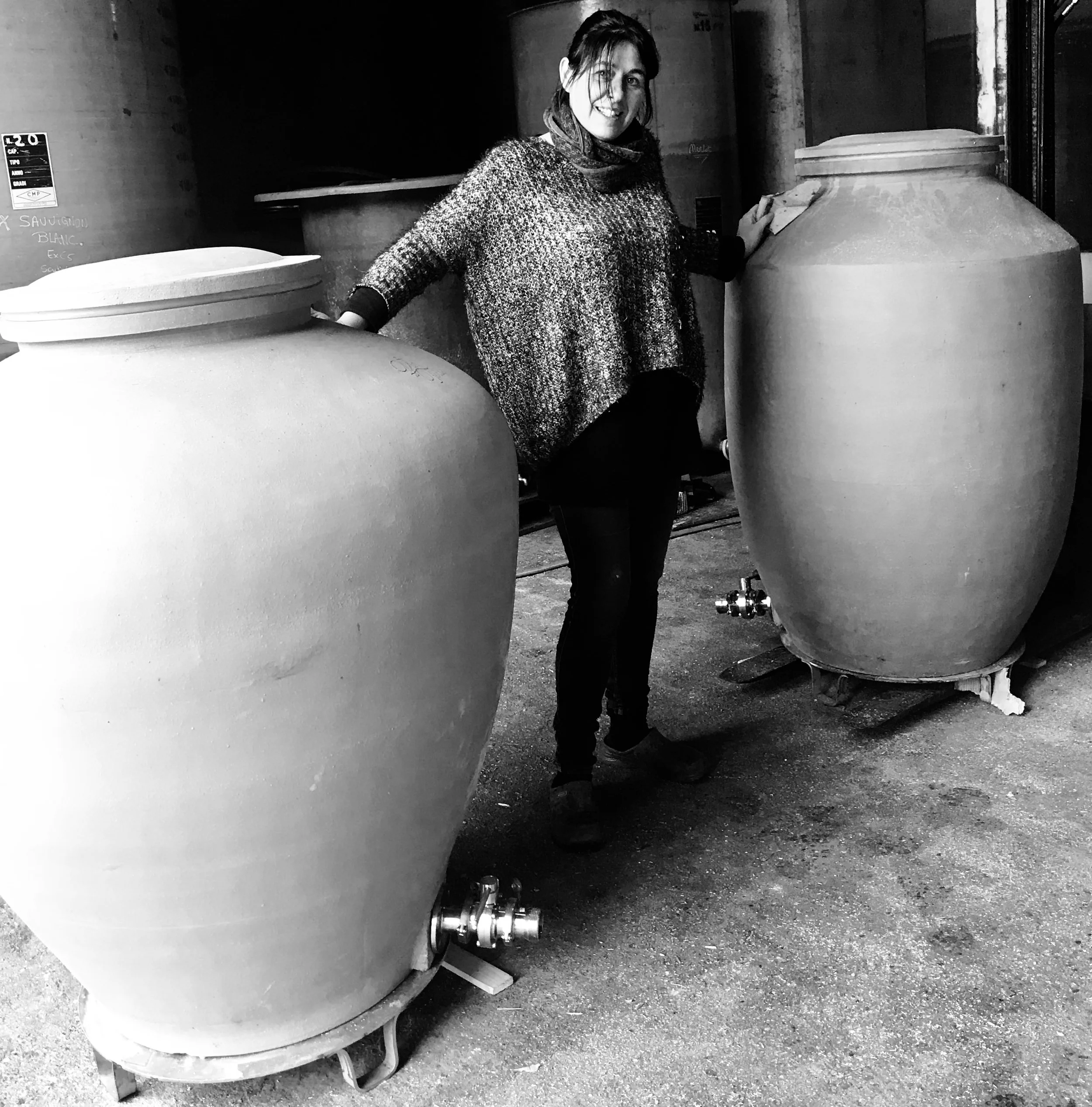MURIEL ZOLDAN
ANTOCYÂME
South-West, France
Muriel, her partner Benjamin, and their children, live together in a converted farmhouse at the end of a dusty road leading nowhere, other than to a neighbors place and her single plot of 7.5 hectares a hundred yards away up on the brow of the hill. From their house they have a view over the stunning countryside composed of rolling hills, forests, and vineyards here in the South-West of France between Gaillac, 24 miles to the east, and Montauban, 10 miles to the north west.
The vines fall within the geographical limits of the Côteaux et Terrasses de Montauban appellation, which is a tiny sub-division occupying little more than 50 hectares of the larger Comte Tolosan appellation. Grapes allowed here are a real mix, including Bordeaux varietals, three types of Gamay, Chardonnay, Syrah, and the more indigenous Tannat and excepting the Gamays, Muriel has most of them as well as the rarer Arboriou.
The family has been here since 2017, when Muriel and Ben moved from the Languedoc. Prior to that, Muriel, daughter and grand-daughter of rural farmers in the South-West, had obtained her oenologue diploma from Toulouse then worked for nine years at Domaine de Sauzet at the foot of the Cevennes hills, as oenologue and winemaker. Looking for somewhere big enough for their two families, Muriel and Ben settled in this little corner of paradise.
Muriel’s philosophy is aimed at respecting the grape, which for her means limiting oenological products in the winemaking process and says that her purpose as grower and winemaker is simply to “accompany” the grapes as they develop. Out in the vineyard, the grass is left to grow freely and Muriel places great importancce on green pruning. Once picked, Muriel dispatches the grapes into tanks of a variety of materials and shapes to ferment and age - sandstone amphora, neutral oak barrels, Flextank, fibreglass tanks, smaller concrete eggs, larger concrete tanks, not forgetting the three qvevri at the end of the garden !
The wines are, like her, full of energy and character, and they cross the spectrum from “easy-drinkers” to complex food wines.














